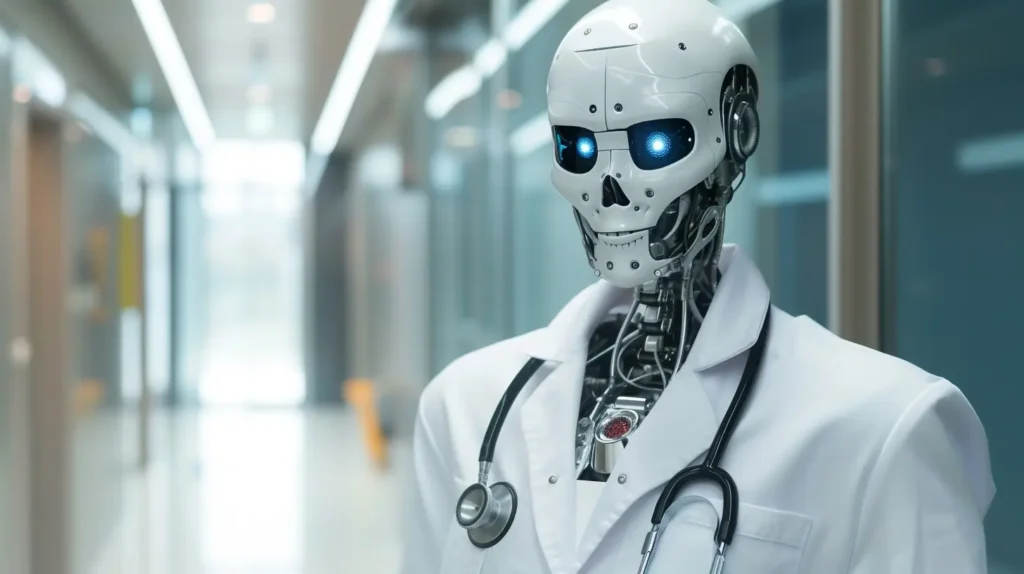In this interview, we spoke with Hugo Fitipaldi, a postdoctoral fellow at Lund University. Hugo’s expertise lies in applying data science and AI to healthcare. With a PhD in Genetic Epidemiology, he focuses on deriving insights from extensive health datasets using innovative methods. His passion involves integrating diverse data for healthcare decision-making, aiming to advance precision medicine.
Hugo discusses managing vast datasets from the COVID Symptom Study (CSS), highlighting the vital role of data science and AI. He shares insights on COVID-19 analysis. He imparts valuable lessons from his healthcare data science and AI experience, benefiting fellow researchers and professionals. In addition, Hugo will be presenting at this year’s Data Innovation Summit. He will explore the dynamics of COVID-19 within Sweden in his presentation “Unveiling COVID-19 Dynamics in Sweden: Large-Scale Data Analysis from the COVID Symptom Study”. This talk will leverage extensive data analysis sourced from the COVID Symptom Study, providing insights into the epidemiological landscape of the pandemic within the country.
Hyperight: Can you tell us more about yourself and your organization? What are your professional background and current working focus?


Hugo Fitipaldi: I am currently working as a postdoctoral fellow at the Department of Clinical Sciences at Lund University. My focus is on the application of data science frameworks to derive public health evidence from large health datasets.
Some might find my background somewhat unusual for someone currently working with data science and machine learning (ML). But I like to think my path echoes Steve Jobs’ notion of ‘connecting the dots’. He mentioned this idea in his memorable 2005 Stanford commencement address. ‘You can’t connect the dots looking forward; you can only connect them looking backward. So you have to trust that the dots will somehow connect in your future.’
I completed a BSc in Physiotherapy from Universidade Federal de Pernambuco (Brazil) in 2013, worked in clinical practice for a few years, and later completed a Masters in Public Health (MPH) from Lund University in 2018. It was during the MPH that I developed an interest in statistical modeling and shifted my focus to the analysis of epidemiologic data. This fascination led me to further my education with a PhD at the Lund University Diabetes Centre, where I delved into the application of data mining and AI-based frameworks to analyze health datasets, particularly focusing on epidemiology, public health, and systems medicine.
Currently, I am involved in projects where I use ML and deep learning (DL) to identify and validate prognostic and predictive biomarkers. These projects aim to address rapid aggressive disease progression in diabetic kidney disease (DKD) and identify potential drug targets. My research interests lie in the integration of health data from various sources such as OMICS, registers, and surveys. I aim to derive meaningful information that can potentially help future decision-making for healthcare.
I am grateful for the opportunities I have had during my path. This includes my involvement in the COVID Symptom Study (CSS) and contributing to the development of machine learning-based prediction tools for COVID-19 surveillance during the pandemic.
In summary, I am deeply passionate about the intersection of data science, artificial intelligence, and public health. I am dedicated to using my skills and expertise to contribute to meaningful research that can impact healthcare outcomes.


Hyperight: Your presentation at this year’s Data Innovation Summit is titled “Unveiling COVID-19 Dynamics in Sweden: Large-Scale Data Analysis from the COVID Symptom Study”. What can the delegates at the event expect from your presentation?
Hugo Fitipaldi: Delegates at the ninth edition of the Data Innovation Summit can anticipate a comprehensive exploration of COVID-19 dynamics in Sweden. This exploration is centered around the novel COVID Symptom Study Sweden (CSSS). COVID Symptom Study Sweden (CSSS) is a nationwide initiative that gathered data from over 200,000 participants throughout the COVID-19 pandemic. My presentation will offer a detailed examination of the study’s methodology, findings, and insights gleaned from CSSS data. It will highlight the ability of CSSS to provide real-time, accurate estimates of COVID-19 prevalence and hospital admissions, and the implications for public health decision-making and preparedness efforts. Moreover, the presentation will explore the transferability of CSSS models to other settings. It will also discuss the potential for further refinement and development of these models using data mining and machine learning techniques.
Hyperight: Could you share some key challenges you faced in handling large-scale data from the COVID Symptom Study? How did data science and AI techniques play a role in overcoming these challenges?
Hugo Fitipaldi: Certainly. Dealing with large-scale data from the CSS posed unique challenges. Especially given that we were conducting this analysis in the midst of a global pandemic. At the time, our understanding of COVID-19 was still evolving. We were continually learning about the dynamics of the virus and its evolving symptomatology.
The CSS aimed to provide real-time insights into the spread of COVID-19. This required data to be processed and analyzed rapidly to identify trends and patterns as they emerged. It was a considerable challenge given the scale of the data involved. There were over 200 thousand participants in Sweden alone and over 4 million participants in total across the UK, US, and Sweden. Quality control was always a concern. Given that the CSS relied on self-reporting from participants, there was always the risk of inaccuracies or missing information in the data. Nevertheless, thanks to an unprecedented effort from various contributors, data continued to emerge from diverse sources. Coupled with our statistical methodologies, this helped validate and cross-check the CSS findings.
In overcoming these challenges, data science and AI techniques played a crucial role. ML algorithms and data mining techniques were instrumental in identifying key symptoms and interactions associated with COVID-19. By leveraging these tools, we were able to navigate through these challenges and gain valuable insights into the dynamics of COVID-19. This allowed us to make significant contributions to the understanding of the disease during the pandemic.
Hyperight: As a speaker on the Data Science & AI Strategy Stage, how do you see the intersection of data science and AI shaping the future of healthcare? Particularly, in the context of pandemics and emerging health challenges?
Hugo Fitipaldi: I see the intersection of these fields playing a crucial role in addressing current and future pandemics and health challenges. We are witnessing healthcare progress towards a data-centric and personalized approach, with AI and data science emerging asessential tools. The integration of these technologies enables healthcare professionals to analyze vast amounts of data and identify patterns, leading to earlier detection and prediction of disease outbreaks. Moreover, the personalization of healthcare with the help of AI and data science allows for tailored treatments and interventions, improving patient outcomes. As pandemics often disproportionately affect certain populations, such as the elderly or those with underlying health conditions, this personalized approach is particularly valuable.
The COVID-19 pandemic has demonstrated the urgent need for real-time data analysis and predictive modeling to inform public health decisions. Data science and AI have played a critical role in monitoring the spread of the virus, predicting hotspots, and guiding policy responses. Looking ahead, these tools will continue to be indispensable in detecting and responding to future pandemics and emerging health challenges.
Hyperight: Given your expertise in extracting public health insights, can you highlight any specific findings or trends related to COVID-19? Were there any surprises during your analysis?
Hugo Fitipaldi: Analyzing data on COVID-19 has revealed several surprising findings and trends. One of the most intriguing aspects has been the evolving nature of symptomatology associated with the disease. Initially, the focus was primarily on respiratory symptoms, but as more data emerged, it became evident that COVID-19 can manifest with a wide range of symptoms, affecting not just the respiratory system but also the cardiovascular, neurological, and gastrointestinal systems.
Also related to this, has been the emergence of long-lasting symptoms, commonly referred to as post-COVID syndrome or long-COVID. Many individuals who have recovered from COVID-19 continue to experience a range of persistent symptoms, including fatigue, shortness of breath, brain fog, and muscle aches, among others. This phenomenon highlights the need for ongoing support and monitoring of those who have experienced COVID-19, and it underscores the complexity of the disease and its potential long-term impacts on patient health and well-being.
Hyperight: In your dedication to advancing precision medicine and healthcare through innovative data-driven approaches, what potential do you see for collaboration between academia, industry, and healthcare institutions? How can such collaboration further these goals?
Hugo Fitipaldi: Collaboration among academia, industry, and healthcare institutions is paramount for the advancement of precision medicine and healthcare innovation. While academia provides foundational research and data insights, industry brings invaluable tech expertise and resources. Healthcare institutions contribute practical feedback based on real-world implementation. This collective effort accelerates the development of inclusive, accessible technologies that effectively address healthcare disparities and significantly improve patient outcomes.
Hyperight: Can you share any lessons learned or best practices from your experience in applying data science and AI to healthcare? These insights may benefit other researchers and professionals in the field.
Hugo Fitipaldi: One key lesson is the importance of collaboration across disciplines. Successful projects often involve experts from various fields, such as medicine, public health, statistics, data and computer science. This ensures that the data analysis is grounded in clinical relevance and provides actionable insights for healthcare providers.
Another crucial aspect is ethical considerations. The use of data science and AI in healthcare requires careful attention to patient privacy, data security, and algorithm bias. It’s essential to involve ethics specialists, legal experts, and society early in the project to ensure compliance with regulations and guidelines. It’s essential to ensure that the data used for analysis is accurate, and representative of the population. Engaging with end-users, including healthcare providers and patients, throughout the development process is also crucial. It ensures that the solutions meet their needs and are usable in real-world settings.
Last but not least, continuous learning and improvement are key. The healthcare landscape is always evolving, so it’s important to monitor and evaluate our algorithms continuously. We should also update them as new data becomes available and incorporate feedback from healthcare providers and patients.
Hyperight: According to you, what analytics trends can we expect in the upcoming 12 months?
Hugo Fitipaldi: I prefer not to make specific predictions. However, I can share what I hope we’ll discuss more over the next year. I think it’s crucial that we pay more attention to the ethical side of AI, especially in healthcare. We have to balance the potential of AI and data science to improve patient care with the need to ensure that these technologies are used responsibly and ethically. This means ensuring that algorithms don’t perpetuate biases, and being transparent about how AI-driven decisions are made and making sure that AI-driven solutions are accessible and affordable for all patients, regardless of their background or socioeconomic status.
On the healthcare front, I’m hopeful about the potential of precision medicine, particularly in tailoring treatments to each person’s unique needs, especially in conditions like diabetes, where a one-size-fits-all approach might not be effective.
However, we’ve got to address some key challenges, like ensuring precision medicine is accessible, affordable, and fair to all patients. These are crucial topics I hope we’ll see more progress on in the coming months!
For the newest insights in the world of data and AI, subscribe to Hyperight Premium. Stay ahead of the curve with exclusive content that will deepen your understanding of the evolving data landscape.














Add comment